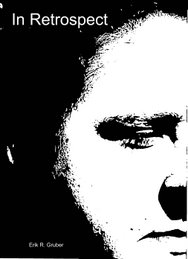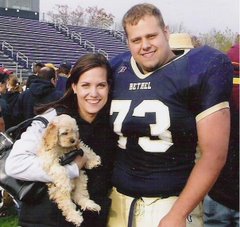 Manfred von Richthofen, also known as “The Red Baron,” is arguably the most well-known fighter pilot in the short history of aviation. With 80 confirmed air-combat victories while flying for Germany during WWI, he was a figure demanding both fear and respect.
Manfred von Richthofen, also known as “The Red Baron,” is arguably the most well-known fighter pilot in the short history of aviation. With 80 confirmed air-combat victories while flying for Germany during WWI, he was a figure demanding both fear and respect.Von Richthofen was born to a family of old Prussian nobility in the town of Kleinburg (in what is now southwestern Poland). After completing cadet training in 1911 he joined a Prussian cavalry unit, serving as a scout on both the eastern and western fronts during the outset of WWI.
With the modernization of warfare (machine guns, barbed wire), cavalry scouts quickly became obsolete and Von Richthofen’s duties as a cavalry-man were limited to reinforcing other troops. Disappointed by this lack of combat, he transferred to the Flying Service in 1915.
In 1916 Von Richthofen met Oswald Boelcke, a fighter pilot recruiting candidates for his newly formed unit. He selected Von Richthofen, and it was with Boelcke’s team that Von Richthofen recorded his first official air-combat victory while flying over Cambrai, France.
From Boelcke, young Von Richthofen learned to fly by a strict set of flight rules to assure the greatest success for the individual and the squadron. Using a combination of tremendous skill and calculated caution, he quickly rose in the military ranks and assumed command of his own unit, Jasta 11, in 1917.
 It was during this time that he was appointed the moniker “The Red Baron.” As a practical means of easy identification, the pilots of Jasta 11 began decorating their aircraft with red colorations and individual markings, with Von Richthofen’s own planes painted entirely red.
It was during this time that he was appointed the moniker “The Red Baron.” As a practical means of easy identification, the pilots of Jasta 11 began decorating their aircraft with red colorations and individual markings, with Von Richthofen’s own planes painted entirely red.The Red Baron lead his new unit to world renowned success, peaking in the “Bloody April” of 1917, during which The Baron himself had 22 kills (raising his total to 52).
In June he took command of the new, larger Jagdgeschwader formations, which consisted of Jastas 4, 6, 10, and his old 11. The Jagdgeschwader soon became a feared force, highly mobile and able to strike quickly with great precision, and earned the nickname “The Flying Circus” for its brightly colored planes and large, colorful tents housing men and aircraft.
In July of 1917 The Red Baron sustained a serious head wound which grounded him for several weeks. He returned to flight in October, but the injury is believed to have caused lasting damage as he would continually suffer from post-flight nausea and headaches (and some claimed a change in temperament).
In 1918, the German government attempted to force Von Richthofen to take a desk job, fearing that the death of a wartime hero with a large cult following would be a serious blow to German morale. The Red Baron refused, and rumors circulated that the British had assembled squadrons specifically to hunt him down, and were offering large rewards and an automatic Victoria Cross to any allied pilot able to kill him.
On April 21, 1918, The Red Baron met his demise while pursuing Canadian Pilot Wilfrid May over the Somme River. During his pursuit he was met with counter-fire from May’s flight commander, Arthur Brown. The Baron turned to avoid the attack and continued his pursuit. It’s believed that during this final stage of the chase Von Richthofen was struck by a single .303 bullet, causing severe damage to his heart and lungs. He managed a hasty landing, keeping the plane largely intact, but died shortly after.
And now, posthumously, The Red Baron makes delicious frozen pizza.
Thanks for reading.


















9 comments:
Sounds like a pretty sweet dude. Pretty impressive resume as well.
Not bad.
I never really new much about Manfred von Richthofen; otherthan he was a great fighter pilot and made some good pizza. Once again, thanks for educating me.
Although i do have to say that in the recent years i feel like Red Baron Pizzas have fallen behind the competitors. I think they still have a stronghold in the market with there personal size deep dish pizzas, but when it comes to original or thin crust i have to go with Bernatellos.
Gruber, you touched on it a little, but I will expand on some things about the baron and WWI.
In WWI "fighter planes" had little if any tacticle (sp) value. They were viewed more as moral victories and losses than anything. What was so impressive about the Baron was that he was a masterful flier and fighter, but when he began to develop the resume it was the red plane more that anything that kind of became larger than life.
You obviously could see the only red plane in the sky coming from long ways away. Pilots were scared to face him so they spent most of there time trying to get away than actually engaging in a dog fight (which if they did the baron would win anyway). But it was this symbol of the red plane that inspired a country (Germany) and struck fear in all opposition.
And even though dogfighting really had no practical value in winning a war, it did have lasting effects on the morality of entire armies.
So in this way the Red Baron had great influence on the war by inspiring his country and striking fear into the hearts and minds of all his enemies!
brrrrrrrrrrrrr...
chekechekechekechekecheke.....
brrrrrrrr...chekecheke...
(that's the noise I would make if I was a fighter pilot)
Good post Grube!
Wow. Pat, your description of the Red Baron reminds me of the fear I put in people's minds while playing Halo. THE GODFATHER WILL LIVE IN INFAMY!!! I couldn't have said it any better. And Joey, although I do enjoy the occasional Red Baron pizza, my all-time favorite frozen pizza (which is now discontinued) was the Tombstone Oven-Rising Crust. Whaddya think???
I would like to comment on the wonderful taste of Red Baron Pizza.
It is good.
Zot- Ever read "All Quiet On the Western Front"? This blog reminds of that book...
I read that book!
This guy's got nothing on Snoopy.
Post a Comment